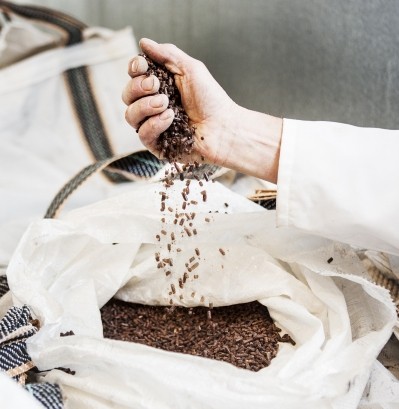Calysta gets $30m ‘ringing endorsement’ from Cargill, pension funds for gas to feed protein

Cargill is one of several new investors in the US natural gas conversion technology firm, which is developing FeedKind, a protein-rich biomass for fish and poultry produced by a microbial culture with natural gas as sole nutrition and energy source.
On Tuesday this week, Calysta revealed it had generated $30m in funding in a C Series round with backing from the corn milling division of Cargill, together with investment by the Municipal Employee Retirement System (MERS) of Michigan, Old Westbury Global Real Assets Fund LLC as well as capital from current investors Walden Riverwood Ventures, Aqua-Spark and Pangaea Ventures.
“The cash will allow us to go the next phase of development,” said Calysta CEO Alan Shaw.
The capital will go towards commercial manufacturing and continued advances in its proprietary gas fermentation platform.
Extensive diligence
Shaw told FeedNavigator: “Cargill’s backing is a ringing endorsement of Calysta, our fermentation process and FeedKind. We were in talks with the company for 18 months and they really did extensive diligence on us, evaluating our technology, our IP, our pilot plant build in the UK and the work that had been previously carried out in Norway.”
The additional new investors Calysta has attracted also demonstrates massive confidence in the methane gas to feed protein technology, he said. “The fact that multi-million dollar pension funds are backing us is a huge statement about the potential for this fishmeal alternative,” added Shaw.
Mike Velings and Amy Novogratz, co-founders of Aqua-Spark, said Calysta’s "sustainable feed" can alleviate pressure on the ocean, in terms of it being a replacement for fishmeal derived protein in fish and livestock.
Calysta acquired the technology when it bought Norway based BioProtein A/S in May 2014.
Path to market
“Cargill reckons our fermentation process is disruptive and can be exploited for a myriad of other uses. But, essentially, the US company’s involvement gives us a direct path to market – it makes us a real company.
We can guarantee major fish producers that we can deliver product to them as we now have the capital, the marketing expertise and the engineering know-how behind us,” said Shaw.
Cargill will also collaborate with Calysta, he said, on a North American plant to produce FeedKind for fish and livestock. “The likely date for that facility to be on stream is towards the end of 2018. It will take two years to construct,” said Shaw.
He said Cargill will retain the rights to market the protein in North America: “But they don’t control the company. We remain completely independent.”
Calysta is also looking to capitalize on “cheap gas” in the Middle East or South East Asia in terms of a location for the construction of a world scale FeedKind manufacturing plant in the coming years, said Shaw.
Teeside pilot plant
The news of the Series C investment round follows last month’s announcement that Calysta is building a small scale production plant in the UK for FeedKind, with grant funding from the UK government.
“The facility in Teeside, in the North East of England, will be operational by the end of this year. It is being set up as a pilot plant to develop product samples for industry but also for registrations beyond Europe, a market where the additive is already approved for sale.
We are particularly interested in securing a US Food and Drug Administration (FDA) registration. But, to do that, we need contemporary samples of the protein,” Shaw told us last month.
The UK facility will produce around 5 to 10 tons of the product per year and will also allow R&D teams to develop “next generation” versions of the protein and to improve the production process.













